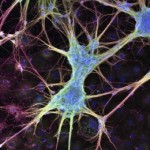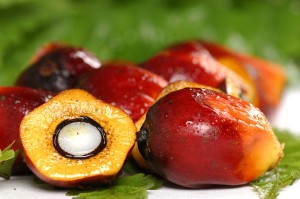 Studies published in international peer-reviewed journals have highlighted Vitamin E’s neuroprotective benefits, an activity largely attributed to Vitamin E’s antioxidant properties. Oxidative stress plays a major role in the development and progression of AD. Results from the Rotterdam Study, one of the largest study to date on the effects of dietary antioxidant intake on dementia risk in over 5,000 subjects have shown that high intake of vitamin E- rich food sources can modestly reduce the long-term risk of dementia and AD. [1]
Studies published in international peer-reviewed journals have highlighted Vitamin E’s neuroprotective benefits, an activity largely attributed to Vitamin E’s antioxidant properties. Oxidative stress plays a major role in the development and progression of AD. Results from the Rotterdam Study, one of the largest study to date on the effects of dietary antioxidant intake on dementia risk in over 5,000 subjects have shown that high intake of vitamin E- rich food sources can modestly reduce the long-term risk of dementia and AD. [1]
A series of clinical studies by Mangialasche et al have shown that high plasma levels of vitamin E tocotrienol is associated with reduced Alzheimer Disease risk. [2]Recently, Mangialasche et al confirms vitamin E’s neuroprotective abilities this time in subjects with varying degrees of cognitive impairment. In the AdNeuroMed Trial, a longitudinal multi-centred study, Mangialsche et al focused not just on alpha-tocopherol levels but also measured tocotrienol levels and combined these with imaging measures to help differentiate patients with AD from those without. Results from the AdNeuroMed Study has shown that plasma levels of vitamin E tocotrienols when taken together with MRI measures can help enhance the accuracy of differentiating patients with varying degree of cognitive impairment. Interestingly, this multi-modal approach can also help predict the progression of milder forms of cognitive impairment to Alzheimer’s Disease (AD). This combined MRI and Vitamin E biomarker approach is also more readily available and less invasive compared to conventional imaging measures e.g. MRI/PET. [3]
Tocotrienol has over 40 to 60 times more powerful antioxidant activity than alpha-tocopherol. [4] Palm tocotrienol significantly alleviates oxidative stress not only by its potent free radical scavenging properties but also by interacting directly and strongly with antioxidant enzymes such as superoxide dismutase and glutathione peroxidase. [5] Vitamin E tocotrienol particularly its alpha isoform is closely associated with neuroprotective activity. [6] Alpha-tocotrienol can readily reach high concentrations in the blood after oral supplementation suggesting that dietary intake of tocotrienols can adequately support neuroprotection. [7]
Apart from highlighting tocotrienol’s role as a potential nutritional biomarker in patients with AD, results from these studies show that supplementation with tocotrienol may reduce the long-term risk of dementia and AD and may adequately protect against full progression of AD in those with mild cognitive impairment.
References
1. Devore EE, et al. Dietary antioxidants and long-term risk of dementia. Arch Neurol, 2010. 67(7): 819-25.
4. Serbinova E, K.V., Han D and Packer L.Free radical recycling and intramembrane mobility in the antioxidant properties of alpha-tocopherol and alpha-tocotrienol. . Free Radic Biol Med 1991. 10(5):263-75. .
6. Sen, C.K., C. Rink, and S. Khanna. Palm oil-derived natural vitamin E alpha-tocotrienol in brain health and disease. J Am Coll Nutr, 2010. 29(3 Suppl):314S-323S.
7. Patel, V., et al., Natural vitamin E alpha-tocotrienol: retention in vital organs in response to long-term oral supplementation and withdrawal. Free Radic Res, 2006. 40(7):763-71






